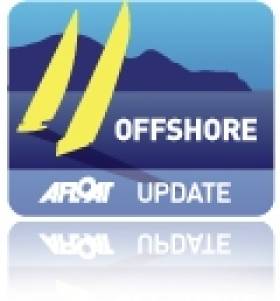Displaying items by tag: Arabia
#offshore – A record number of teams – including Ireland's Damian Foxall and David Kenefick– will line up at the start of the annual EFG Sailing Arabia – the Tour (SATT) on February 15.
Cork based Kenefck will be a driver/ trimmer on Team Avera. Foxall is teamed up with the Oman crew.
Since EFG SATT was first launched in 2011, the fleet has crossed the start line in Bahrain and finished in Oman's capital city of Muscat but in 2015, the 760 nautical mile route has been reversed with 11 boats starting their campaigns at Muscat's premier waterfront development The Wave.
They will finish approximately 15 days later at the Amwaj Marina in Manama, Bahrain's newest marina, having completed six legs and two inshore races across seven different stopovers, which showcase the best marinas and facilities in the Gulf region including a new venue at Sohar in Oman.
The course change for this unique endurance event was designed to create a more exacting test for sailors in the form of strong and sustained headwinds in the early stages of the race, a move that has resulted in a higher entry level among teams in Europe and the Gulf looking for challenging racing and training opportunities with warm waters and a stable breeze.
"It is a great opportunity to get to know a new sailing area and we were drawn by the prospect of spending some time in warm, sunny conditions during the long European winter," said Bienne Voile skipper Lorenz Muller.
"Also, the concept of combining inshore races with legs is just very attractive. EFG Sailing Arabia - The Tour has become the perfect successor of the Tour de France a la Voile, which has now omitted the legs in its new format."
In 2014, Sidney Gavignet's EFG Bank (Monaco) were crowned SATT champions and this year, the French skipper has returned with a new team, assembled with two key objectives: to win the event for the second consecutive year and give three young Omani sailors an opportunity to race alongside world-class professionals.
"We will start as favourites which is fair enough because we won last year and I am comfortable with that. We have a good team and we are professionals so winning is very important," said Gavignet whose crew includes one of the most accomplished offshore sailors in the world, Damian Foxall from Ireland.
"The new route, which features more upwind sailing will be more tactical and also harder physically for the teams but that should favour us because of our offshore experience. The harder the route, the better it is for us."
The line-up for this year's EFG Sailing Arabia – the Tour, the only Pan-GCC offshore sailing race of its kind in the region, features six teams from Oman and one, ZAIN Kuwait from Kuwait. Team Averda is made up mainly of young British sailors skippered by German sailor Marcel Herrera while Bienne Voile will be flying the flag for Switzerland, Team Delft for The Netherlands and GAC powered by Dongfeng for China.
"We have a very solid team and our guys are going to love the Farr 30 because they are like a big dinghy," said GAC skipper Nick Moloney whose crew is made up mainly of Chinese Olympic class sailors.
"Night sailing could be interesting and there will be a lot of it during the 760nms course but that will be the same for most of the crews.
"Tactics will be difficult for anyone who hasn't sailed the course which is everyone because it is being run backwards! I'm sure there will be some struggles but this is new to us and we love new challenges."
"We like the concept of changing the route to make it more challenging being an upwind race, therefore a lot more strain will be put on the boats, crews and time limits in general," added Herrera who last year came second on the EU-flagged Messe Frankfurt Sailing Team.
"We would really like to compete with the top of the fleet, and even occasionally mix for the chances of a podium finish on some of the legs and inshore races."
The first 100 miles of the first leg from Muscat to the International Maritime College Oman, are expected to be upwind and tough while the next leg, which at 172 miles is the longest of the event, takes the fleet around the Musandam Peninsula to Ras Al Khaimah, where fishing boats and nets pose a real hazard. The boats then head off on short hops to Dubai where the first of two inshore race days will be staged, then to Abu Dhabi.
The Four Seasons Marina at Doha will host the next stopover and the winning team will be presented with their trophy at the finish in Bahrain on February 28th.
Schedule:
Leg 1 – 15th February, Muscat- Sohar
Leg 2 – 17th February, Sohar – RAK
Leg 3 – 19th February, RAK - Dubai
Leg 4 – 23rd February, Dubai - Abu Dhabi
Leg 5 – 24th February, Abu Dhabi – Doha
Leg 6 – 26th February, Doha - Manama























